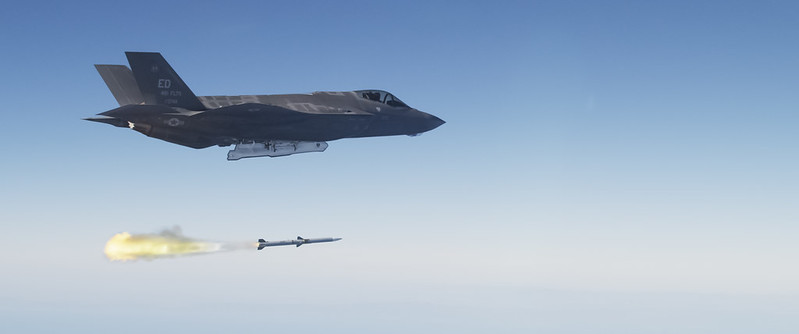re: F-35 Joint Strike Fighter Thread
Is This True?
link to the video
Posted on InsideDefense.com: May 30, 2014
A former Joint Strike Fighter program executive officer was fired in 2010 after explaining that he based the government's decision to award prime contractor Lockheed Martin 85 percent of the potential award fee -- when the F-35 program was suffering from major cost growth and schedule delays -- on his desire to protect the job of his Lockheed counterpart, according to a former senior Pentagon official.
Ashton Carter, deputy defense secretary from 2011 to 2013, on May 16 provided a Harvard University audience a behind-the-scenes account of his efforts in 2009, during his first year as Pentagon acquisition executive, to understand why projected costs for the F-35 aircraft had doubled and why the program was facing schedule delays.
At the time, an independent cost estimating team was advising Pentagon leaders that the true cost to develop and procure the planned F-35 fleet would be billions of dollars more than the JSF program office estimated, foreshadowing a $60 billion increase to the F-35's official price tag.
Carter said he called in the program manager, whom he does not name during his remarks. At that time, Marine Corps Maj. Gen. David Heinz had recently become the F-35 program manager, in April 2009. His predecessor, from 2006 to 2009, was Air Force Maj. Gen. Charles Davis, now a three-star general and the military deputy to the Air Force acquisition executive.
"I want to see the bill, everything that goes into the cost of this airplane," Carter said, in a video of his remarks posted on YouTube on May 22. "The program office didn't know, could not tell me where the money was going."
At that time, the F-35's development was being executed under a cost-plus contract, a vehicle that allows a contractor to pass costs on to the government in addition to seeking an award fee. "I asked the program manager: 'Let me see your award fee history.' I look at the award fee history over 10 years, it is 85 percent a year," Carter said.
The former deputy defense secretary said he told the program manager the F-35 program was "a disaster," adding, "You're giving an 85 percent award fee every year, what's going on?"
"And," Carter continued, "he looked me in the eye . . . and said: 'I like the program manager on the Lockheed Martin side that I work with and he tells me that if he gets less than 85 percent award fee, he's going to get fired.'"
"So, this guy was fired," Carter said of Heinz. Then-Defense Secretary Robert Gates announced Heinz's dismissal during a Feb. 1, 2010, press conference.
Carter subsequently ordered a sweeping technical review of the JSF program and transitioned it to a fixed-price contract in an effort to force Lockheed to shoulder a portion of the costs associated with developmental risks.
"We began a process that was very difficult: to re-educate the Air Force-Navy team that managed this important aircraft so that they knew what the hell they were paying for," Carter said in the Harvard speech. "They had no idea."
In 2013, the Pentagon restructured the award-fee scheme for the Joint Strike Fighter program, setting aside $337 million that Lockheed Martin could earn by achieving specified goals during the balance of the aircraft's development phase.
Air Force Lt. Gen. Christopher Bogdan, the current F-35 program executive officer, told the Senate Armed Services tactical air and land forces subcommittee on April 24, 2013, that a portion of the remaining award fees Lockheed could earn would be tied to the timely delivery of planned aircraft complete with scheduled software and capability improvements. The bulk of the remaining fee is tethered to achieving the current aircraft development plan on time and budget, he said (DefenseAlert, April 24, 2013).






